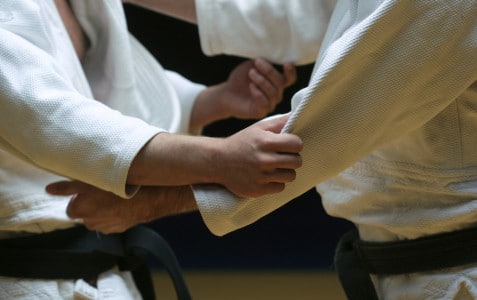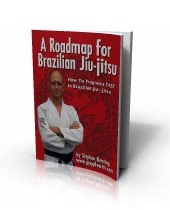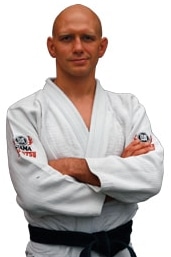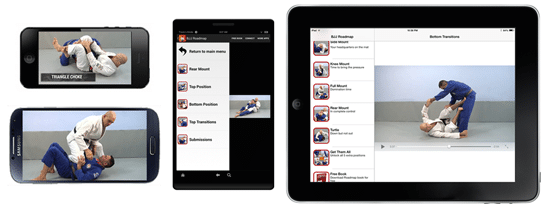
I’ll go ahead and say it: every practitioner should have at least a couple of throws and takedowns for BJJ. Yes, it’s true that pulling guard is an option in sport BJJ competition, but ultimately this is a martial art, which means we have to at least occasionally consider the self defense aspects of what we’re doing.
Are you going to pull guard in a streetfight? Not bloody likely.
In this Grapplearts article you’re going to learn about the top ten throws and takedowns you see most often in high-level BJJ competition.
The first thing to know is that there are TONS of different throws and takedowns in Grappling.
In the original Judo syllabus, for example, there were 67 different throws you had to learn. But if you include all the major variations of those 67 throws then you’d be well into the hundreds before you were done. .
And then if you add the throws and takedowns from Freestyle Wrestling, Greco-Roman Wrestling, and Sambo it gets ridiculous: probably a thousand techniques or more…
But it’s actually a lot simpler than that. You DON’T have to learn a thousand throws to become a competent grappler.
You don’t even have to learn all 10 techniques mentioned on this page – in fact that would be both inefficient and ineffective.
Consider Judo… Most top Judo players only have two to four reliable throwing techniques – that’s it! They specialise in a small number of throws that most suit their body type, personality, and fighting style.
What those throws are might vary from player to player, but there’s nobody out there hitting 50 different throws in the Olympics. Nobody.
Almost all of a high-level Judoka’s training is geared towards honing the mechanics for whatever limited number of throws they use, working on the setups for them, and getting thousands of thousands of repetitions.
If knowing more throws was the most effective way to win matches don’t you think that that both Wrestlers and Judoka would have figured this out already?
The groundwork in BJJ is so important that we have even less time to train standup. So for us the key is to get one or two throws to work for reliably for you, and then you’re off to the races.
Here are the 10 throws and takedowns for BJJ that you see most often in high-level competition…
1, Double Leg Takedown
If you grapple then you should be able to do at least a basic Double Leg.
This takedown is a mainstay in BJJ, Wrestling and MMA (unfortunately the Judo illuminati has completely banned it, to the detriment of the sport in my opinion).
You can’t use the Double Leg if you’re afraid of commitment: you have to hit it hard and fast. But it’s also NOT just a football or a rugby tackle – this is a highly technical manoeuvre with sophisticated setups and followups.
There are lots of different variations for the Double Leg. The biggest differences between these variations include head position (is the head to the side or in the middle of the chest) and whether you drop down to your lead knee as you shoot (the penetration step).
Many Freestyle Wrestlers use the penetration step because their opponents are usually quite bent over and they need to get as low as possible to hit this move. In MMA it’s more common to stay up on the feet, but both variations are equally valid for BJJ.
2, Single Leg Takedown
The Single Leg Takedown is another hugely important technique in Wrestling with a lot of application in BJJ. Watch Bernardo Faria compete in the BJJ Mundials: in almost every match he pulls half guard, secures a Single Leg, comes up to his feet, and takes his opponent down.
Basically you reach down, grab one of his legs, lift it off the ground, and topple him over. There are a LOT of subtleties that you have to observe when you do that though, and changing the position of your hands, your head, or your body by a couple of inches can change this from a high-percentage takedown to an ineffective waste of your energy that lands you in a bad place.
Single Legs turn into Double Legs, and Double Legs can turn into Single Legs depending on your opponent’s reaction. They are often chained together.
Note that for BJJ and Submission Wrestling you have to be careful about putting your head to the outside of your opponent’s body (or let him force it to the outside) because a) it’s illegal at white belt in IBJJF competition, and b) it does expose you to the guillotine. That being said, there is no 100% safe technique, and the head-outside position does offer some very strong finishes if you move quickly and pass the guard
3, Low Single
While technically still a Single Leg takedown the mechanics and finishes of the Low Single are so different that it’s worth considering it as a separate technique.
Basically you get as low as you can go, shoot forward, cup your opponent’s heel with your hand, and then drive forward to take him down. Depending on his reactions to that initial attack there are a LOT of different ways to finish the technique once you’re in on his foot.
Some wrestlers have built their entire career around this attack (go look at John Smith wrestling footage from the eighties and nineties). It has been used in MMA on occasion by both Randy Couture and one of my own coaches, Erik Paulson. And you see it all the time in BJJ competition, with competitors shooting for it both from outside of gripping range and after they’ve tied up with their opponents.
4, Ankle Pick
The Ankle Pick technique is a relatively low risk, high reward attack that can land you in a great position for passing the guard.
This was a favourite attacks of one of the highest level wrestlers I ever trained with. He would get an overhook from the clinch, fake Uchi Mata (see below) to get one of your legs off the ground, then quickly step in and hit an ankle pick on the supporting leg. You knew exactly what was coming but it still worked almost every time!
In BJJ the ankle pick is often applied using a lapel grip. This grip can be used to yank your opponent forward, forcing him to step towards you with at least one of his legs. This brings his foot within range, allowing you to apply the Ankle Pick.
As described in the second video below it is also often used in combination with a fake guard pull; their reaction to the guard pull sets up and amplifies the effectiveness of the ankle pick.
5, Lapel Drag
The Lapel Drag is the favourite takedown for many BJJ competitors. It is both a takedown and a setup for other throws and takedowns.
To attack with the Lapel Drag you get a solid grip on your opponent’s collar, then sidestep, pull strongly, and swing around his body like Tarzan on a vine.
If you hit it hard enough, and if your opponent isn’t expecting it, then your opponent will faceplant and you can come to the top very easily. If he bases and resists the initial movement then you can use the Lapel Drag to set up other takedowns, most commonly variations of the Single Leg takedown that was covered in a previous section of this article.
The same essential movement can be used from the guard, most typically from the Seated Butterfly Guard vs a standing opponent. So if you get good at this move it will do double duty – you’ll be able to deploy it both standing and on the ground.
This throw is not typically seen in Judo; in that sport the cross-grip grip is penalised, touching the legs with your hands is verboten, and your opponent almost never lands cleanly on his back with a loud boom that is rewarded by an Ippon in that sport. So if you specialise in the Lapel Drag know that you’re working on a throw that is essentially unique to BJJ (which I find kind of cool)!
6, Tomoe Nage
Tomoe Nage is a Judo sacrifice throw. Sacrifice throws are called that because you temporarily put yourself under your opponent before throwing him. This may sound like a dumb idea, but the sacrifice actually allows you to generate a lot of momentum and get very deep under his centre of gravity.
Certain Judo throws – and Tomoe Nage is one of them – are very well suited for BJJ practitioners, because if you screw them up (i.e. if your opponent doesn’t get thrown) then you usually end up in the guard rather than being completely and utterly out of position.
(Plus any throw used regularly by Captain Kirk has to be a good move, right?)
This throw comes in two broad categories: traditional or straight-on Tomoe Nage, and sideways Tomoe Nage (also known as ‘Yoko Tomoe Nage’). In the two videos below you’ll see both variations.
7, Arm drag with Inside Trip
This is maybe the easiest BJJ takedown to get on a bigger, stronger opponent. It’s one of the favourite throws of both Brandon ‘Wolverine’ Mullins and Elliott Bayev, both of whom I’ve collaborated with on various instructional video projects.
It works in BJJ, Submission Grappling, and even in MMA.
To set up the inside trip you often use the arm drag to distract your opponent and to clear a path to get in towards him. Then you trap his foot with your leg (this looks suspiciously like the ‘Pigeon’ Pose from Yoga) and use the weight of your entire body against his leg to drive him to the ground.
8, Foot Sweep
For the sake of simplicity I am combining a great number of techniques into the one category of ‘Foot Sweeps.’ In fact Judo has many different variations of this throw (inside, outside, double, lifting, etc.), many with their own name.
One huge benefit of these attacks in a BJJ context is that they don’t require a ton of strength and energy: instead timing and sensitivity are much more important. So if you get good at foot sweeps you can easily take down much larger opponents without having to exert a tremendous amount of strength and energy; the only downside is that it can take a LOT of practice and training to develop the correct timing for this attack.
Another advantage of foot sweeps is that they often land you in a position where you are outside your opponent’s guard. If you stay close and drop your weight quickly after the throw then you can often go directly to knee on belly or some other control position without having to fight your way past his guard.
9, Uchi Mata
This throw is one of the highest-scoring throws in competition Judo, but be warned: it requires a lot of work to get good at. Then again, Uchi Mata works well against bent-over postures that are so common in BJJ so that work might just be worth it…
With Uchi Mata you partially turn your back towards your opponent while pulling very hard to off balance him (off balancing is called ‘kuzushi’ in Judo), and then use one of your legs to lift your opponent off the ground and/or kick his leg out. Either way he tumbles to the ground.
There are many variations of Uchi Mata, including hopping versions, non-standard grip versions, and attacking the near leg, far leg, or straight up the middle.
Judo practitioners (like in the video below) often overcommit by BJJ standards and roll right over top of their opponents during the throw. That’s because one good throw can end the match and they’re not worried about groundwork after the fact. BJJ practitioners need to use a little more restraint
10, Drop Seio Nage
This is one of those high-risk, high-reward moves. But when you pull it off it’s both spectacular and VERY effective.
It leads into strong pins like North-South, and quick submissions like the armbar.
Some people are worried that that this throw could expose your back and allow your opponent to get the rear mount. This is certainly a legitimate concern if you do this throw slowly, but against a skilled practitioner executing Drop Seio Nage explosively it’s a LOT harder to take the back than you might think.
That being said to use Drop Seio Nage you have to have confidence in both the throw itself AND your turtle position. But it’s a favourite of many Jud0-trained BJJ competitors.
Bonus Throw, Yoko Sumi Gaeshi
Of the techniques listed here Yoko Sumi Gaeshi is probably seen the least often in competition. But it is undoubtedly effective, and it’s also one of my very favourite throws.
The initial gripping for this sacrifice throw is critical: one of your arms controls his arm, and your other arm goes behind his body. This grip has similarities to a 2-on-1 (or Russian) grip in Wrestling, except you’re coming over his back with one of your arms rather than having both your grips controlling his one arm. This allows you to drop your weight on his shoulder, breaking his posture and limiting his mobility.
One advantage of Yoko Sumi Gaeshi for BJJ practitioners is that this throw has a Butterfly Guard flavour to it, so it shouldn’t be altogether unfamiliar. When you apply it you get deep under your opponent’s centre of gravity and use an instep hook to flip him over.
If this throw is successful (and you follow up correctly) then it’s very hard for your opponent put you into the guard. You typically end up in a very strong side control position, ready to continue your attack and tap him out!
I once watched Sambo practitioner and UFC pioneer Oleg Taktarov cut his way through an entire room of Judo black belts using this throw. Yoko Sumi Gaeshi is his favourite throw and it seemed that most of the black belts weren’t really comfortable dealing with the unorthodox gripping strategy that precedes it. As a result he threw black belt after black belt with it.
Here’s me teaching it for a friend who wanted to compete but had zero takedown experience to start with!
Second Bonus, Pulling Guard
Yes, I’m going to include pulling guard as a throw.
At its finest guard pulling isn’t simply to get the fight to the ground; instead you’re temporarily going underneath your opponent to sweep him and get to the top! The best methods of pulling guard lead directly into sweeps so you can almost consider them throws.
One resources that covers pulling guard in depth is Volume 2 of the DVD and app series Spider Guard Masterclass (Double Biceps Spider Guard). In the instructional Elliott Bayev deconstructs the guard pull of high level guard players.
Below is a bit of extra footage filmed while we were working on that very large and comprehensive project.
Third Bonus, How to Get a Fight to the Ground from the Rear Bearhug
There are many ways to get behind someone in a fight.
Maybe you’ve used an armdrag to get there, or maybe you’ve ducked under a punch, or maybe you’re a law enforcement officer trying to control an unruly person without hurting them.
Once you get behind the other person a the rear bearhug is a great way to control them (just keep your head tight against their upper back so they don’t elbow or reverse headbutt you in the face).
From the rear bearhug you may decide to take the fight down to the ground. In the video below you’ll learn my favorite 4 ways to do that…
The FREE ‘Roadmap for BJJ’ App for iPhone and Android Devices
The free Roadmap for BJJ app contains Stephan Kesting’s entire system for learning Brazilian Jiu-Jitsu fast. Grab this app for your iPhone, iPad, and Android device and watch as the pieces of the puzzle immediately start coming together for you.




